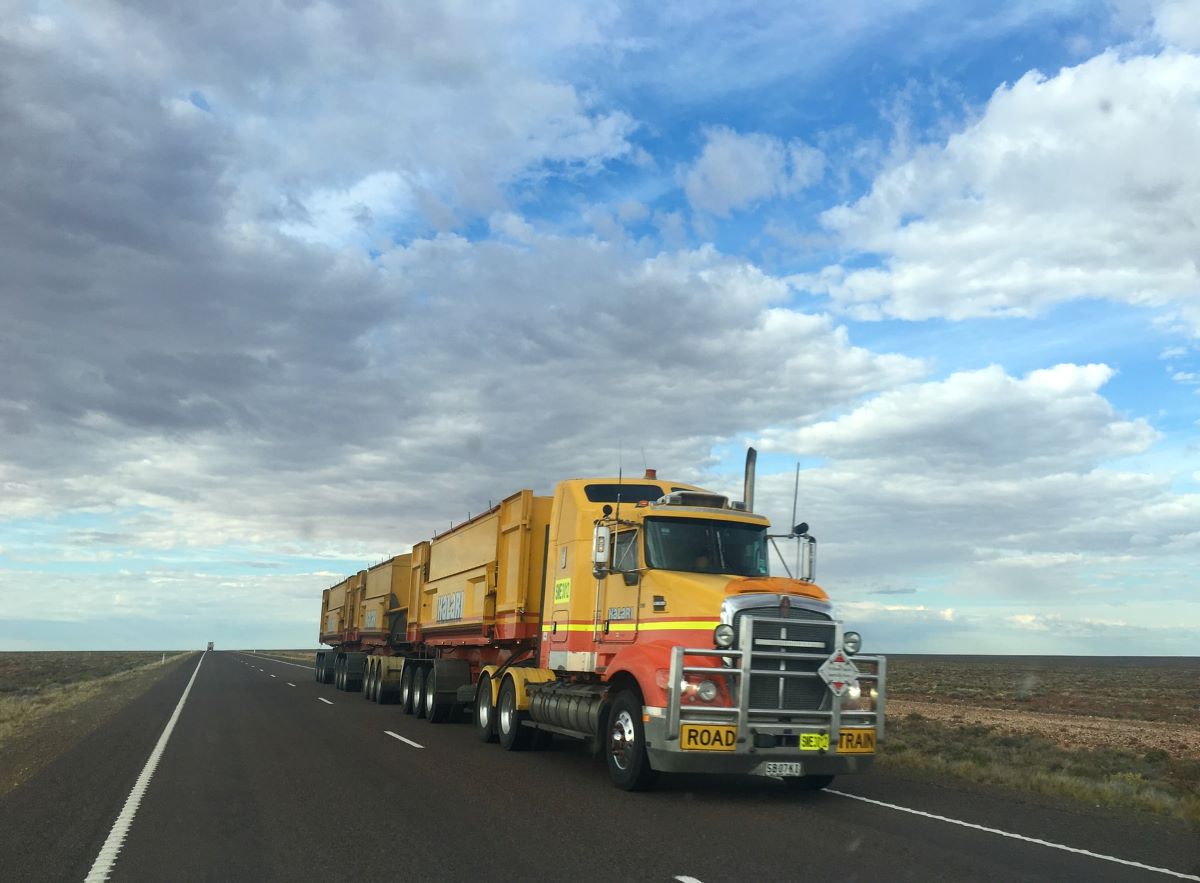
Why Do Truck Drivers Put Teddy Bears on Their Trucks?
Putting stuffed animals on cars and trucks was a weird car trend a few years ago—though you can still find the occasional toy-outfitted vehicle on the streets. However, stuffed animals like teddy bears, cartoon characters, and dolls have appeared on truck grilles for decades. Possible reasons why truckers put stuffed animals on their trucks? Superstition, to show personality, or even to get a date. (Really.) Read on to learn more.
Why do truckers put stuffed animals on their grilles?

The most thorough piece of research I could find on the matter of teddy-bear truck grilles comes from a 2005 article published by New York Times (NYT). According to the NYT, there wasn’t an easy answer then—and there doesn’t appear to be one now.
“All are soldiers in the tattered, scattered army of the stuffed: mostly discarded toys plucked from the trash and given new if punishing lives on the prows of large motor vehicles, their fluffy white guts flapping from burst seams and going gray in the soot-stream of a thousand exhaust pipes.”
Andy Newman, The New York Times
Customizing a tractor-trailer truck isn’t a new fad, but this is one of the strangest. Unlike custom wraps, provocative mud flaps, extreme lighting fixtures, or a heavily decorated cab, crucified stuffed animals send an odd message. What’s the purpose?
According to the NYT, “one prevalent theory among truckers is that chicks dig them.” One garbage-truck driver was quoted saying, “I drive a garbage truck. How am I going to get the ladies to look at me?” As a member of the target audience of chicks, I’m not so sure this is true.
What does a stuffed animal on the front of a truck mean?
The above scene is possibly the most famous instance of a teddy bear on a truck grille. Spoiler alert: it’s the end scene from Toy Story 3, where the dastardly Lotso (Lots-o’-Huggin’ Bear) is picked up by a sanitation worker and lashed to the front of a garbage truck.
The driver remembers a similar bear from his own childhood, which would suggest that the chachkies decorating his truck all have some kind of sentimental meaning. Per the NYT, college lecturer Monroe Denton traced the tradition of tying stuffed animals to truck grilles back to the incredible carved figureheads on ships’ bows.
Robert Marbury, an artist and anthropologist, believed that the tradition has ties to Latin American cultures, where “where the festive and the ghoulish enjoy a symbiotic relationship.” Some claim it’s a show of masculinity and machismo. Others claim the exact opposite—that it’s tough, rugged truck drivers looking for some softness in the world.
Though, it may all just come down to superstition.
Superstitions aren’t uncommon in the automotive world

You may know about the most common driving superstitions, like holding your breath in a tunnel or hitting the roof or dashboard when going through a yellow light. There are also some common superstitions about naming boats.
Truck drivers installing teddy bears and other stuffed animals on their truck grilles may be superstitious behavior. For instance, a trucker decades ago may have believed that the animals were a lucky charm. Then, the story spread over the years, and other drivers began to do the same thing. More drivers lashed more stuffed animals onto more trucks, and the rest would be history.
There is no clear answer to the question—but that’s what makes it such a great question.
Also, I’d like to add that in researching this topic, I may have stumbled on a very particular video category on YouTube that involve everyday objects being crushed by garbage trucks. Many of them featured stuffed animals. I don’t really understand what I watched, but now you know, too.


